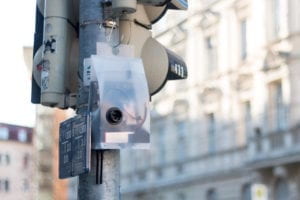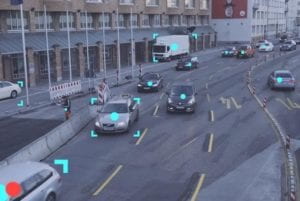In my previous research, according to Crawford’s article The Art of Interactive Design, I defined interaction as a cyclic process where two actors alternately receive and respond to the message, which in computer terms are called: input, processing, and output. As the learning process goes on, I have a new understanding of the concept of interaction. First, one of the two actors in the interaction process should be human because the concept of interaction is human-centered. From the midterm project’s user testing, I learned that the goal of our product design is to achieve a better user experience, so the concept of interaction must include a human role. Second, the output of the machine should not be limited to physical output to the user, but should also include emotional stimulation to facilitate the user’s next input.
The first interactive project I researched is called Anti-Drawing Machine. The machine allows either a disrupted or collaborative drawing by manipulating the rotation and position of ordinary paper material. In the video of user testing, I found that users are interested in the response of the anti-drawing machine, which constantly stimulates their emotions and promotes their actions to compete with the machine. The output of machine stimulates users’ new rounds of input, which lines up with my definition that interaction is a cyclic process which includes input, processing, and output. Also, we could see there’re many pictures made by users on the back wall. The reader’s input and the machine’s output can produce visual images, which makes the project experience more memorable to users. This idea inspires my final project. Maybe I could I visualize the user’s input path, and gave certain artistic output, such as music, painting, etc. Also, creating a sense of competition for users makes interactive products more interesting.

WEBSITE: https://www.creativeapplications.net/arduino-2/anti-drawing-machine-whimsical-and-imperfectly-characteristic-collaborator/
Another project I want to analyze is Open Data Cam. This project is a great work. It is a tool that helps to quantify the world. With computer vision ‘Open Data Cam’ understands and quantifies what it sees. For example, in the video, the user can use this Open Data Cam to calculate the types and numbers of vehicles passing a certain street in a given period of time. Open Data Cam is a useful data collecting product, but it seems not applied to my definition of interaction. First, its input is not directly controlled by the user, but caused by the movement of the vehicle. So it doesn’t fit in with my definition that one side of my interaction should be human users. Second, used as a practical tool, this product does not have an interactive process in which output and input stimulate each other. Therefore, this project does not line up with my definition of interaction.


WEBSITE: https://www.creativeapplications.net/news/open-data-cam/
After more than half a semester of study, I have a new understanding and definition of interaction: It is a cyclic process where users and another actor (usually digital devices) alternately input, process, and output. During the interaction, output and input stimulate each other, which leads to a circular interaction. According to the article Designing Interaction for Chatbot-Based Conversational Commerce with User-Centered Design, the interactive design product should fulfill the usability goal and the user experience goal, which means interaction is a user-centered process. Therefore, in the future learning process, I would pay more attention to the user experience in the interactive process, and strive to enhance the user’s input interest, which could stimulate a new round of output.